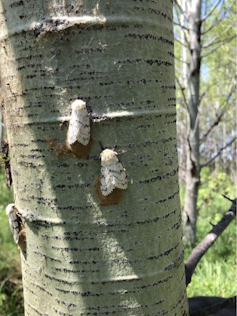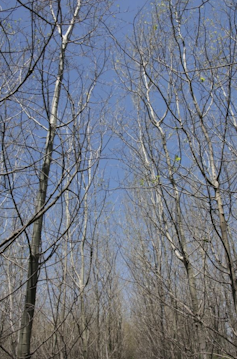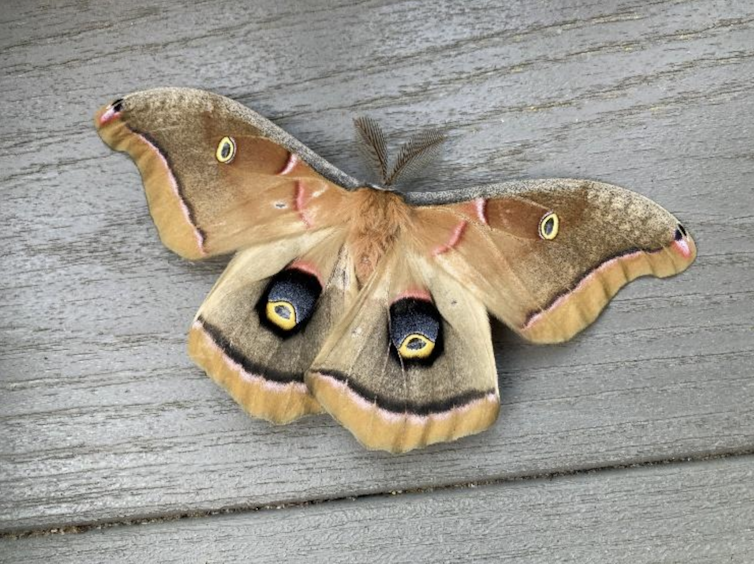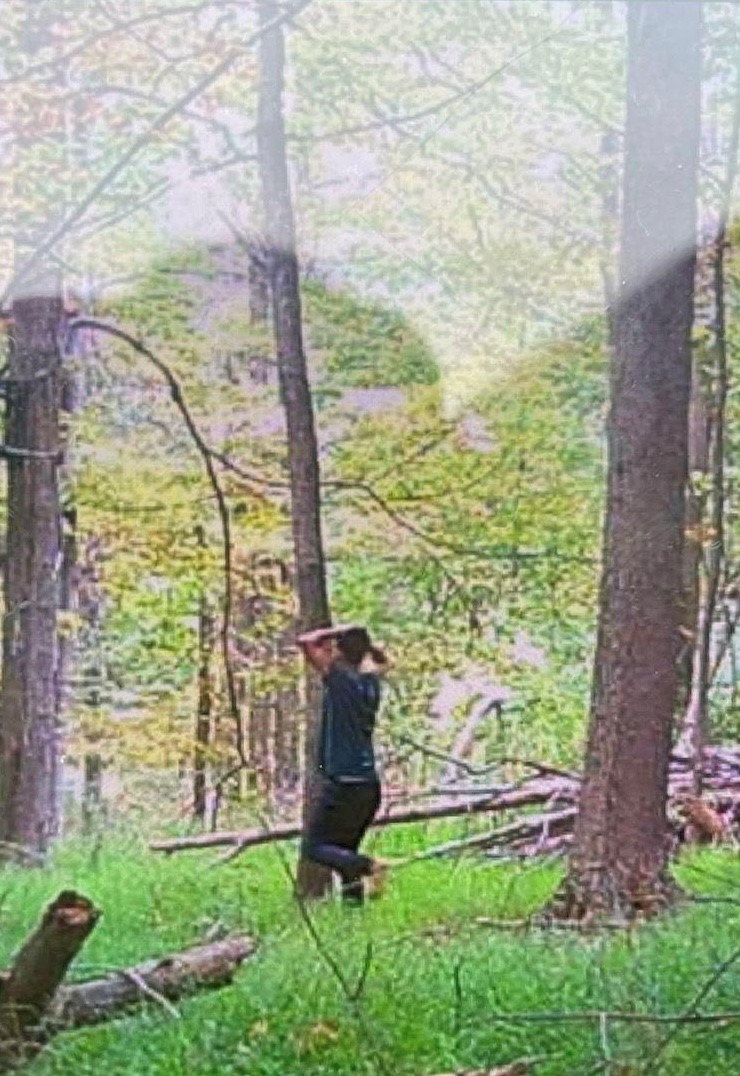When we walked with a colleague into an aspen forest near Madison, Wisconsin, in the early spring of 2021, we expected to finalize our plans for a research project on several species of insects that live and feed on the trees. Instead, we found a forest laden with fuzzy, brown egg masses.
These masses, belonging to an invasive species known as the spongy moth, brought our plans to a screeching stop. We knew that within weeks, hungry spongy moth caterpillars would strip the forest bare.

Female spongy moths lay individual egg masses, each of which contains 100 to 600 eggs.
Richard L. Lindroth
We are chemical ecologists interested in how plant chemistry influences the interactions between plants and plant-feeding insects. As seasoned scientists, we’ve seen that good science stories sometimes end up nowhere near where the researchers first anticipated. This is one of those stories. And like many good stories, it incorporates villains, beauty, poison and death.
After an initial period of distressed hand-wringing about the fate of our aspen forest, we pivoted our research plans. We decided to address how defoliation – another word for leaf consumption – by an invasive species might alter the chemical composition of plants, to the detriment of native species.
All plants produce defense compounds to fend off herbivores, like insects, that try to eat them. These defenses include well-known chemicals like tannins, caffeine and cyanide. In turn, insects have evolved adaptations to these chemical defenses tailored to the particular species that they feed on.
The results from this study surprised even us and were published in September 2023 in the journal Ecology and Evolution.
The ecological players
Quaking aspen (Populus tremuloides) is the most widespread tree species in North America.

Caterpillars completely defoliated our aspen forest in June 2021.
Richard L. Lindroth
As a keystone species, aspen provides food and shelter for many forest organisms. Without these trees, forests across much of North America would look very different. Aspen has been ecologically successful in part because of its unique chemistry. It produces a class of defense compounds called salicinoids. Under most conditions, these defenses keep herbivores from fully defoliating the trees.
Invasive spongy moths (Lymantria dispar) are the most destructive defoliators of broadleaf forests in North America. Aspen is a favored food plant of spongy moths, which feed on expanding leaves in early summer. At high population densities, spongy moths can defoliate extensive areas of forest.
This spongy moth-induced carnage does not bode well for other insects that depend on aspen for food, such as the native silk moth Anthereae polyphemus, which feeds on aspen from mid- to late summer.




